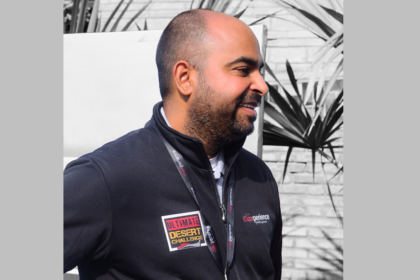
By Arvind Balan
Experiential marketing creates brand awareness through direct interactions with consumers in real-time, and that’s what makes experiential marketing stand out from more traditional and digital forms of advertising. All of the senses are stimulated, and that’s been demonstrated to increase brand loyalty by making an impression on people emotionally. Using experiential marketing may raise consumers’ awareness of your brand and strengthen their attachment to it through a more personal and genuine channel. To your benefit, you will gain extensive knowledge about your target market.
The following case study highlights how luxury auto brands have used experiential marketing for the promotion of their new products:
Case 1-The Audi Experience
Audi, a brand known for its luxury cars, has recently embraced experiential marketing. Audi Driving Experience is a race-track-based advanced driving training program that gives customers an up-close view of the car’s creativity, skill, and precision. Before bringing its driving experience to India in 2012, the German brand offered it in various countries. Another such event is the Audi Sportscar Experience, which attracts more than 2,000 drivers annually, improving its engagement with customers. Buyers may see the car’s capabilities on the circuit.
Case 2-Cadillac-Culinary Kitchen
Cadillac California hosted the LYRIQ Electriq Kitchen to introduce the new LYRIQ, skipping the New York auto show. The five-course menu was inspired by the EV. Chefs developed the tasting menu over six weeks after a Cadillac designer gave them a walkaround. The new Cadillac was both the inspiration for the menu and the showpiece for the event. Innovative dishes were prepared and were inspired by the translucent glow of the car’s front grill and the lighting created a tingling sensation.
The Takeaway
A common refrain among successful business owners and CEOs is to “Take care of your consumers or else your competitors will.” The automotive sector is no exception.
People often underestimate the challenges faced by the auto sector. On the surface, performance appears to be excellent, but there are significant challenges due to new technology, a shifting regulatory landscape, and a very picky clientele.
Adding experiential marketing to your auto company’s overall marketing plan can make a huge difference. Numerous studies have shown that this method of advertising can be just as effective as traditional methods. Measuring the performance of an experiential marketing campaign is trickier than other marketing tactics.
With these advantages in mind, the article explains how automotive businesses are implementing experiential marketing to give consumers a favorable experience with their brand.
The use of experiential marketing is logical. More and more businesses are allocating resources away from traditional marketing and toward more innovative forms of promotion, such as events. Increasingly, motor companies are spending money on in-person promotions. During the next three to five years, CMOs are expected to devote as much as 50 percent of their marketing budgets to experiential initiatives. The goal of any successful experiential marketing strategy is to leave a lasting impression on consumers through the creation of memorable experiences. Experiential marketing is effective because it encourages positive word-of-mouth about the brand from real customers rather than the company itself.
For younger generations like millennials and Gen Z, the value of traditional marketing strategies like email, direct mail, sponsored advertisements, etc., has diminished. Therefore, automotive companies have a unique opportunity to engage with their target audience in a memorable and engaging way. The automotive sector leverages experiential marketing to establish connections with customers that go above and beyond those of social or digital marketing.
It has been observed that experiential marketing is the most powerful form of advertising. It’s the most efficient strategy for converting consumers into buyers and advocates. It’s no surprise that after an experiential marketing event, the vast majority of attendees end up becoming regulars. Unlike other channels, experiential calls for participants’ active participation, which includes the use of their senses. Cars are such an important part of people’s lives and such a significant investment that it’s crucial that they have a pleasant, multisensory experience with them. Pop-up bars with digital displays, auto shows with interactive wheel stands, and expos with product demos are all examples of experiences that allow businesses to connect with customers on an experiential level. Products are available to consumers through all of their senses. These senses are amplified by cutting-edge technologies like artificial intelligence (AI). Customers in any industry, but especially the automotive sector, would rather have a physical product in hand as opposed to a digital one. Instead of reading about the car, they want to take a test drive and see it for themselves.
Earned media, organic, or user-generated content, both contribute to the buzz surrounding any given marketing event. This anticipation, however, is amplified through experience marketing. Experiential advertising is the only method that can create a real stir. A recent survey found that nearly all consumers who participated in an event or experience shared the content on social media. Experiential marketing helps firms expand their reach and introduce their products to new consumers.
Those times when experiential marketing could be thought of as the marketing equivalent of the Wild West are swiftly passing. The most iconic and innovative automotive brands are now adopting this method to learn more about their customers. The benefits of merging digital and physical client data into a unified profile are already being felt by marketers. This increases participation and provides material for subsequent advertising efforts.
A print ad in a magazine or newspaper will not spread like wildfire. No amount of attention from a publicity stunt will last. Flyer distribution does not necessitate any sort of personal interaction with the target audience. Although digital and social media have their advantages, they cannot compare to the power of experiential marketing. Reaching out to these demographics can be accomplished through experiential marketing. It’s much more probable that an event will attract enough attention on social media to go viral if it’s original, intriguing, and significant.
Impressions made during immersive events and shows will remain in the minds of attendees for as long as they continue to reflect on the nature of their experience. Having an experience gives customers a sense of belonging, both personally and with a particular brand. The effects of all this are likely to linger in people’s minds long after they’ve finished their morning coffee and turned off the news.
The marketing industry is evolving. Nowadays, consumers can pick from a wider variety of options, so businesses must establish genuine connections with their clients if they hope to retain them. It is no longer adequate to merely bombard an audience with messages in the hopes that some will stick. Brands that prioritise the customer experience tend to have greater success. More and more automotive companies are experimenting with experiential marketing due to its proven success. It’s a tried and effective method for getting things done, and it works better than ever because of advancements in technology and shifts in mindset.
The author is a co-founder at Maxperience. Views expressed are personal.
Also Read: Chai Pe Charcha with BrandWagon
Follow us on Twitter, Instagram, LinkedIn, Facebook
Get live Share Market updates and latest India News and business news on Financial Express. Download Financial Express App for latest business news.




